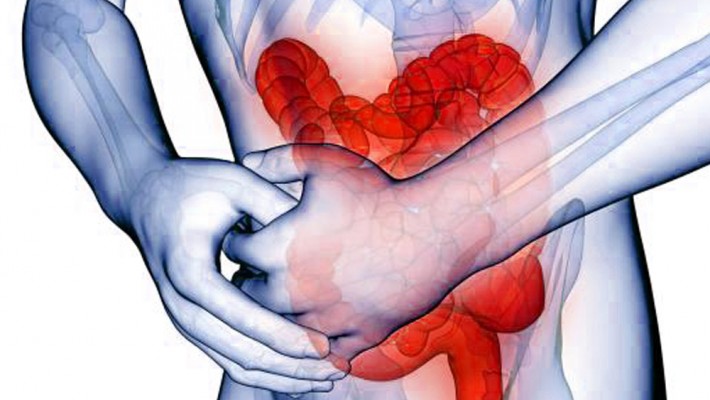
What is SIBO?
What is SIBO?
Gas, bloating, general abdominal discomfort – there are many causes for these all-too-common complaints, and the newest one on our radar is called SIBO. It’s short for Small Intestinal Bacterial Overgrowth, and recently the numbers of patients coming in with this condition has increased significantly. Let’s break it down.
The first question I hear you asking – but isn’t there supposed to be bacteria in my small intestine? Isn’t that why I’ve been putting half of my health spending account towards probiotics on your recommendation? Short answer – yes, there are trillions of bacterial cells throughout the small and large intestine (fun fact: you have more bacterial cells inside and on the surface of your body than you have human cells). But there are different strains of bacteria in different areas. And the problem arises when the bacteria that’s supposed to stay in the large intestine gets into the small intestine.
The main difference in function between the small and large intestine: the small intestine digests food and absorbs nutrients, and the large intestine balances water and electrolytes through selective reabsorption. One other important feature of the large intestine is production of some B vitamins and vitamin K by some of our friendly resident bacteria.
In more detail, the small intestine receives chyme from the stomach, which is a thick mixture of chewed-up, partially-digested food and stomach acid. The acid is quickly neutralized by a base from the pancreas, allowing the bacteria to go to work. As you travel further down the 7-meter length of the small intestine, the numbers of bacteria increase exponentially as they reproduce to continue the digestive process. Without these beneficial bacteria, you would die of starvation within hours. By the time you reach the large intestine, ideally all the useful nutrients have been absorbed, and there’s mostly only waste materials and water. If food carries on into the large intestine, then you experience trouble in the form of gas. And that brings us back to SIBO.
Remember how we said there are different bacteria between the small and large intestine? If food material gets into the large intestine, the bacteria that live there digest it differently from the small intestinal bacteria – with the socially-awkward byproduct of gas (mostly methane). Now imagine if that bacteria that’s supposed to be confined to the large intestine make the move into the small intestine, with its unlimited supply of food particles. It’s the bacterial equivalent of a keg party with the whole town showing up uninvited.
What are the Symptoms of SIBO?
The hallmark symptom of SIBO is bloating. After eating. After eating anything. This is what can sometimes differentiate it from other causes of bloating. If there are particular food sensitivities, bloating can usually be traced to certain foods, which can then be avoided. If you have a deficiency in a certain digestive enzyme (two of the best-known examples are the enzymes that break down lactose or gluten) that bloating is usually accompanied by other fun symptoms like flatulence and/or diarrhea. But the list of possible symptoms associated with SIBO goes on and on – gastrointestinal upset, skin and joint issues, and even mood changes and nutrient deficiencies.
How do I Test for SIBO?
We use a breath test that measures hydrogen and methane. These are gases that are produced by bacteria (but not humans) and so can be used to estimate bacterial activity in the gut. These gases diffuse into the blood and eventually are excreted via the lungs.
How do I Treat SIBO?
There are two main treatment options, each with its own advantages and disadvantages. First – treatment with pharmaceutical antibiotics. The second – treatment with herbal anti-microbial products.
With antibiotics, an advantage is that it only takes a two-week course of treatment. One potential disadvantage (depending on your extended health coverage) is that it’s fairly expensive (between $300-500).
With herbal products, the course of treatment is about twice as long. Typically the herbal supplements should cost less than the antibiotics, but they should be chosen with care and on the recommendation of a health professional familiar with their use and efficacy, as the formulation and potency are key to their effectiveness.
Whether you choose to use either antibiotics or herbals, the remainder of the treatment is the same. First, you need to keep everything moving forward – remember, the original problem is that large intestine bacteria somehow managed to make their way against the flow up into the small intestine. If everything is moving forward properly, this greatly reduces the chances of recurrence.
Second, replace all the essential bacteria that you killed off, using a solid protocol of probiotics. We get wonderful results with the Natren line of probiotics, one of the original and best-researched products available.
To round out the treatment: you’ll need to work on healing the gut lining from any damage done by the invading bacteria; follow a diet specially designed to “feed the person but starve the bacteria”; strengthen the ileo-cecal valve (located between the small and large intestine, designed to prevent bacterial movement upstream); and improve overall digestive health, including production of stomach acid and digestive enzymes.
If you’ve been experiencing the symptoms listed above, you should probably give us a call and get it checked out – it might be SIBO, or it might be something less complicated. Either way, we can make you feel better, and make eating enjoyable again.






Leave a Reply
You must be logged in to post a comment.